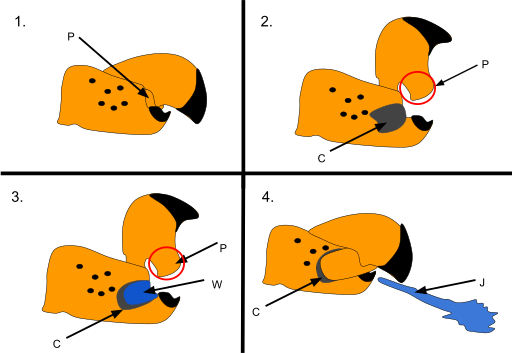Pistol Shrimps Use Bubbles To Kill Their Prey.
- bioworld090
- Jun 26, 2022
- 3 min read
Updated: Jan 1, 2023

Image Credit: Museums Victoria
INTRODUCTION
Snapping shrimps, also known as pistol shrimps, are members of the family Alpheidae. There are more than 620 recognized species of snapping shrimps distributed among 45 genera. Pistol shrimps are small creatures with a body length of 3-5 cm and a weight of 25 grams. These shrimps are characterized by their claws of unequal sizes, the larger of which grows half the size of the shrimp's body.
DISTRIBUTION
Most genera of snapping shrimps are found in temperate and tropical waters, with the exceptions being Bataeus and Potamalpheops which are found in cold seas and freshwater caves respectively. These shrimps commonly inhabit the coral reefs, submerged seagrass flats and oyster reefs.
PRODUCTION AND USE OF CAVITATION BUBBLES
Pistol shrimps use bubbles to defend themselves, kill their prey and communicate. Unlike normal bubbles, these bubbles are very powerful and can easily dismember, stun or kill other small creatures. These bubbles are called cavitation bubbles as they are produced by the phenomenon of cavitation.

Pistol shrimp claw mechanism Carvermyers, CC BY-SA 4.0
These bubbles are produced by the snapping action of the larger claw. There are two major elements to the claw: a movable dactyl and an immobile propus. The dactyl has a projecting plunger, while the propus has a socket in which the plunger fits snugly.
The shrimp opens the claw by pulling the dactyl away from the propus and water enters the socket. The shrimp then closes its claw at a speed of 97-100 km/h, which causes a jet of water to be expelled at a speed of 25 m/s from the socket.
Due to such high speed, the pressure around the claw and water jet decreases and a small region of low pressure is created around them. Small air bubbles present in this region of the low-pressure area start to grow in size and move in the direction of the water jet. After moving far enough from the low-pressure region, the bubbles enter a region of relatively high pressure. Due to this increase in pressure, the bubbles implode.
A "pop" sound is also heard, which is produced by the collapsing bubbles and not by the snap of the claw. The sound produced is between 210-218 decibels, which is louder than a gunshot. It can get so loud in the areas where vast colonies of these shrimps reside that it can even interfere with equipment like sonar.
As the bubbles collapse, temperatures as high as 8000 °F are released and shockwaves powerful enough to stun and kill the shrimp's prey are also generated. Not only this, but the sound produced by the bubbles also causes sonoluminescence, a process under which sound waves of sufficient intensity generate light in quick flashes. However, these flashes of light are not intense enough to be seen by the naked eye.
SOCIAL INTERACTIONS
Pistol shrimps make social associations among themselves and with other animals for protection and shelter. They are the only marine animals to exhibit eusociality. Social interaction with other animals includes living in association with sea anemone and sponges that provides them with protection and shelter. However, the most famous example is their association with a species of fish called goby fish. They both live in a mutualistic relationship where the shrimp provides the goby with shelter and the goby provides it with protection.
•To learn the mechanism behind pistol shrimp's cavitation in detail, check out https://www.nature.com/articles/s41598-017-14312-0
•To learn more about the eusocial behaviour of these shrimps, go to https://www.semanticscholar.org/paper/Eusociality-in-a-coral-reef-shrimp-Duffy/e1ca048592fd016e24e8257f94f928a6a2c678f6 and download the pdf file.
•To learn about the amount of energy released from the cavitation bubbles and if humans can use it for their benefit, check out http://large.stanford.edu/courses/2017/ph240/nag2/



Comments